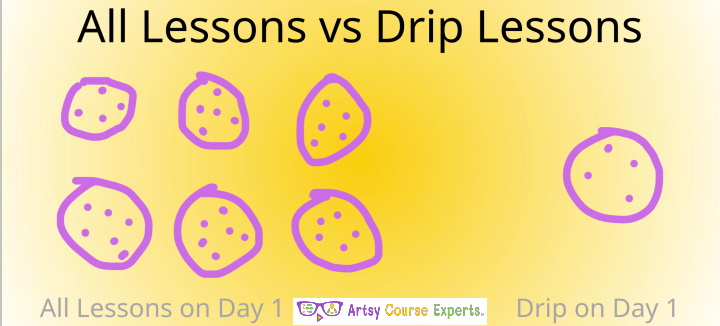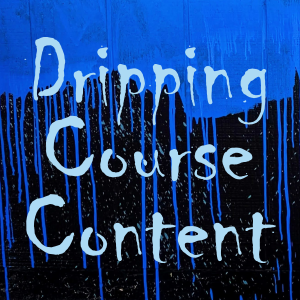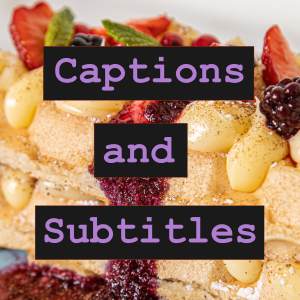Are you or your students feeling overwhelmed by huge amounts of course content? If so, drip-feeding might be the key to pacing your students, developing your content slowly, and having more fun teaching your skills.
If you have a lot of design, music, and creative content to teach, your students can feel overwhelmed the moment they land in your 75+ video lesson course. Even if they paid for it, it’s still like a mountain worth of stuff to get through.
Also as a teacher, you may feel overwhelmed creating a 10 module course with 75+ lessons and all the different handouts, quizzes, and bonus materials.
Even if your schedule is already jam-packed, there is a way to save yourself time, increase sales, and ensure your students are effectively learning with a simple process.
Ever heard of drip-feeding? Whether you have or you haven’t, read on to learn what drip-feeding is, and how it can work for your creative students and you.
What Is Drip Feeding?
Take a second to think about your email inbox. I know—you’d rather not think about those work requests and spam messages, but let me explain.
If you have ever provided your email address to a website to get more information on an upcoming event or product release, then you may have joined a marketing drip-feed sequence. In the sequence, they send you info drip by drip. Like sending you one marketing or informational message each week. Notice how they didn’t drown you with all the info they had to tell you all at once.
Drip-feeding began as a marketing tool, allowing businesses to attract and retain loyal customers while providing a steady stream of benefits. However, the education industry has taken note of the success of drip-feeding and has started to leverage it in education.
When content is released using the drip-feed method, it is released using a predetermined schedule. The content will be delivered using the same timing intervals regardless of when the subscriber joined the mail list. This allows the business to have a steady stream of communications with each customer and also to spread all the marketing messages that have to be communicated.

Why You Should Drip Feed Your Course Content
Now that we understand how drip-feeding works from a marketing perspective, let’s apply this knowledge to the logistics of your creative course.
To learn anything effectively, students need time to receive, process, and apply new knowledge. This is especially true when learning lots of new parts of a complex skill such as drawing, dancing, sewing, etc.
So, how do you ensure that no one is left behind and that students are not stunned by the massive amount of information in your course?
Think about that moment when your new student arrives at your course and sees the navigation bar or table of contents with lessons upon lessons of content to process.
As an instructor, drip-feeding might be an effective tool if your students have these concerns.
Drip Feeding Avoids Overwhelming Students
Starting a course with fifty or more lessons on day 1 is exciting but can soon be overwhelming to some students.
Even if you chunk up your lessons into module buckets, it can still be a stunning amount of content for many students.
However getting a 10, 15, 30, or even 60 minutes of content a week is totally manageable. It’s just like waiting and consuming 1 TV show or podcast a week.
Once the content is being throttled this way, you can release one big lesson or a module with 3 to 5 lesson parts a week.
Students can even break out the new content where they consume it over a few tiny sessions throughout the week.
Also remember, that while allowing students to continue lessons is important for regular online courses, it’s even more important for students that need to take classes in small bites.

Drip Feeding Helps Teachers Creation
Drip-fed content is also good for teachers who may feel overwhelmed producing so many modules in order to deliver a quality course at a premium price.
Teachers can take their time and produce one or two modules or lessons each week instead of spending months creating all the course content.
Once the full course is complete, the teacher can move on to other things.
Students who signed up early will get lessons as they are created, but future students will get courses that are already made step by step.

Drip Feeding Allows Students To Preview Your Course
Because the course content is released in slower increments, drip-feeding allows students to get a better feel of:
- Your teaching style
- The class expectations
- The level of difficulty
- The types of assignments
For example, let’s imagine that a new student just purchased your course. Your drip-feed schedule releases a new module or lesson every Monday. That means that your student has seven days to assess the course and determine if they want to continue.
There should be no reason for them to request a refund at the end because they have already previewed your content and style. So you may be able to reduce your guarantee and refund policy when using drip courses.
What About Discussions For Drip Courses?
In general, most online courses are asynchronous and students take lessons at different times.
This means students are starting and completing lessons and assignments at different times, not just Tuesday morning or Wed night, but potentially weeks, months, or years later.
If you include discussion areas in your course, it may be a good idea to host chat rooms by different modules or topics. This way when students have a question about a topic, they can discuss it in that room regardless of when they hit that topic.
For example:
- A woodworking class with a Choosing your wood topic
- A motion graphics class with a Which version of Adobe After Effects topic
- A Salsa class with a topic just for turning your partner
Drip courses can help students leverage your chat rooms effectively if you have broken out your chat rooms. For more tips, see Is It Easy For Students To Ask The Teacher Questions?
A Word Of Caution
Think back to your school days. There was always one classmate who seemed to finish their assignments and projects before everybody else. Maybe you were that student. If you were, you know what it feels like to anxiously wait for the rest of the class to catch up.
Now, think about the students in your class. Even if most or all of your course content is delivered online, those advanced students will still feel the effects of being delayed by the drip schedule. They can learn quickly and efficiently, and they want to complete the course as fast as possible. In today’s learning environment, where workshops and certifications can be completed at lightning-fast speed, it’s understandable that students would expect the same from a creative skills course as well.
When drip-feeding content, students should expect delays in content availability. However, you can manage their expectations by communicating often and honestly. If they express frustration towards the slower schedule, thank them and remind them of the benefits.
Additionally, providing supplementary assignments, such as extra credit work or practice exercises, can also alleviate student frustration while deepening their skills.
Drip Content Summary
What began as a business marketing strategy to attract and deliver value has transitioned into the world of e-learning.
Drip-feeding content is now a more appealing option when creating some courses for both students and teachers.
Great for both beginner and experienced instructors, drip-feeding enables instructors to pace their curriculum content creation.
For students, drip-feeding provides a safe, low-pressure environment in which they can learn, study, and apply their knowledge at their own pace. If you offer a drip course, make sure to include it in your SEO For Your Online Course.
While there are many benefits to course content dripping, there are some disadvantages too. Fast students looking for knowledge or quick answers may get frustrated and quit your course to find a faster path forward.
If you are encouraging student reviews and getting feedback that you have too much content, then you may want to consider breaking out your course or using a course that drips content over a multi-week program.
Need More Course Design Help?
If you want to learn more about figuring out the perfect course format, reach out to us at Contact Artsy Course Experts where we can help you with planning, setting up, audits, coaching, and technical support.
More Tips For Online Teachers
The following articles and resources can help you make better drip courses














